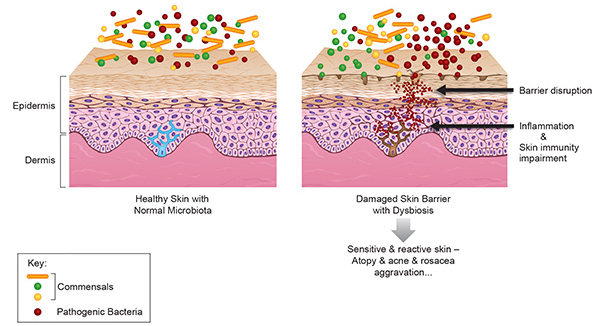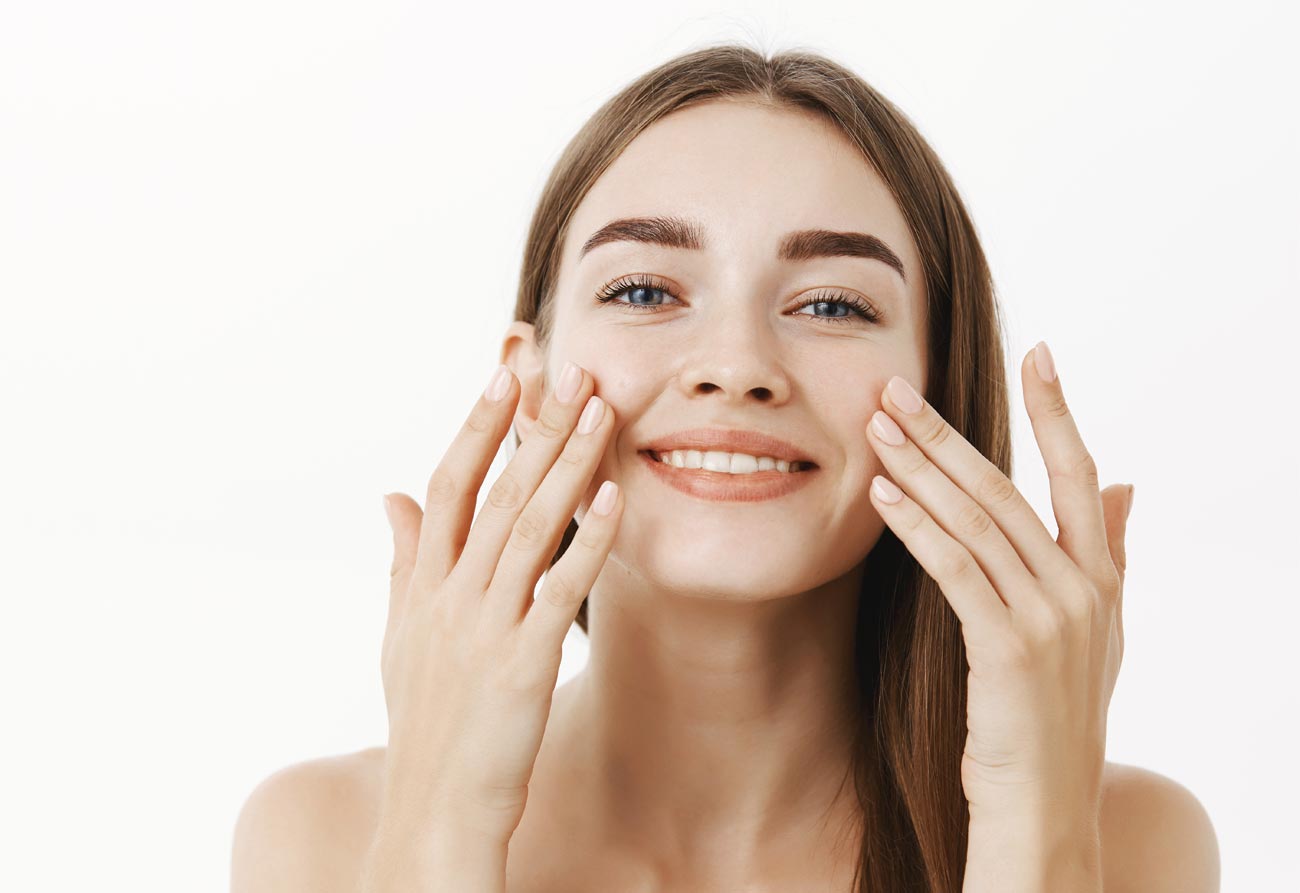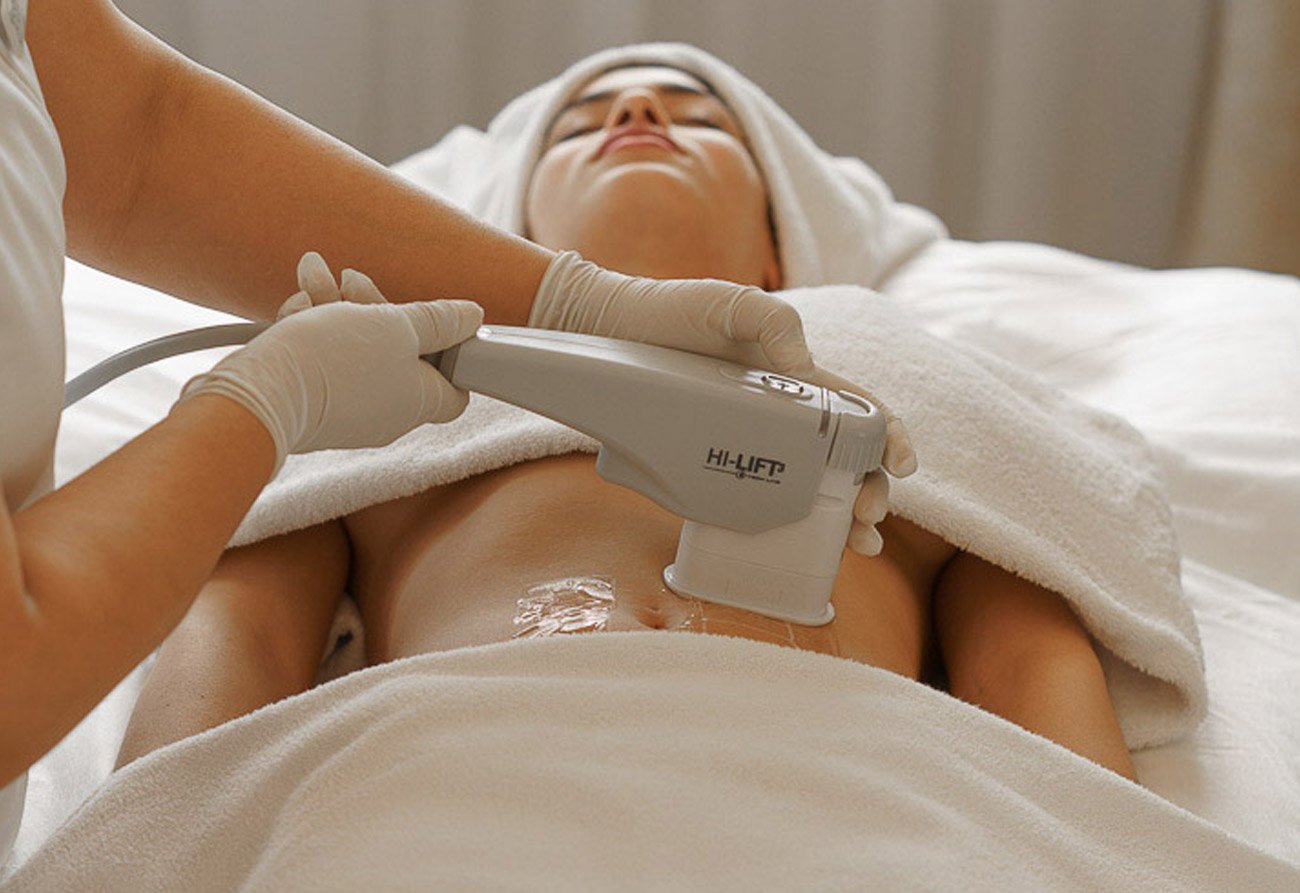Do you know that your skin it’s a massive colony for a variety of microorganisms that is known as your skin microbiome or microbiota? They live, feed, multiply and fight for resources and doing so have a big impact on your skin health. In this article, our experts explain you why the skin microbiome is important and how to protect it with proper cosmetics and facial treatments.
These microorganisms include bacteria, fungi, viruses, and other microbes that coexist with the skin cells and play a crucial role in maintaining the skin’s health. They play a vital role in protecting the skin from harmful pathogens, regulating inflammation, and modulating the immune response. The Key for a healthy skin microbiome is the diversity: the presence of many types of microorganisms means that the battle for survival will prevent any of the species to become predominant and gain more territory on your skin. Many cutaneous microorganisms can produce molecules that inhibit the colonization of other microorganisms or alter their behavior. A poorly populated microbiome has been associated with various skin conditions, including acne, eczema, psoriasis, and other dermatological disorders.
The composition and diversity of the skin microbiome can vary depending on various factors, including age, gender, geographic location, lifestyle, and skin type. The skin microbiota of a healthy adult remains stable over time, despite environmental perturbations but the use of antibiotics, soaps and other skincare products can impact the skin microbiome’s composition.
The main microbes on our skin are bacterias and they are very diverse: from Staphylococcus epidermidis that is a major inhabitant of the skin, and in some areas it makes up more than 90 percent of the resident aerobic flora and its considered a “good” bacteria, to Cut Bacterium acnes (formerly Propionibacterium acnes) that is the relatively slow-growing, aerotolerant anaerobic, linked to the skin condition of acne, that flurishes on our sebaceous glands, and all the others in between that can cause different skin infections: Staphylococcus aureus, Micrococci, Diphtheroids (Coryneforms), Streptococci, Gram-Negative Bacilli.

But none of these bacterias are harmful for our skin as long as their numbers remain “in control” so again it’s crucial to maintain a diverse flora to avoid the “invasion” of a certain species.
Another component of our normal microbiome are the fungi. There are skin fungi present at 14 different places across the body. They like folds or thicker skin and shaded areas such as: the eyebrows, ear canal, nostrils, back of the head, behind the ears, heels, toenails, between the toes, back, inginal areas, chest, palms. Research shows that there are around 80 different species of fungi on our body. The head and the trunk usually have between 2 and 10. Most of those fungal species belong to the genus Malassezia but some species from the genus Candida or dermatophytes as Trichophyton are also represented. We usually tolerate them well but sometimes when the microbiome is disrupted – for example when we take antibiotics and most of the bacterial colonies die – we might get a fungal infection just because now the fungi can “conquer” more territory and develop more then usual.
We also host viruses that can live freely on the skin itself, or they can be inside bacterial cells. The most common viruses on the skin are bacteriophages – they are killing the bacterias so they play an essential role in the regulation of the skin microbiota. Human viruses such as herpes or the virus causing warts and verrucas are also common. They are usually known as pathogenic because they are harmful, but commensal viruses have yet to be studied more, it’s an uncharted territory for now.
And finally there are little creatures that live on our skin which are not simple organisms such as bacterias or viruses, they are mites! Mites are also a part of the skin’s microbiome: Demodex folliculorum is the name given to small mites that live in hair follicles. These mites feed on the dead skin cells around the hair follicles and lashes and can sometimes cause different skin conditions such as dermatitis or eczemas. Eyelash mites in larger numbers can cause symptoms like itchiness, redness, and burning around your eyelashes. Good eye hygiene can help prevent mites and also good prevention advice is to never share eye make-up such as mascara, eyelash or eyebrow brushes, as these mites can be contagious.
They can also worsen skin symptoms or flare-ups in rosacea. Demodex appears to have strong connections with rosacea. According to the National Rosacea Society, people with rosacea have about 18 times more Demodex folliculorum mites compared with those who don’t have rosacea. The mites are even considered by some experts to be a direct cause of rosacea. In any case, Demodex can lead to worsening rosacea symptoms in those who are affected.
So there is a whole micro-world living on your skin constantly competing for food and territory and that’s why your skin is a battlefield!
What should we do to maintain a healthy microbiome?
First of all a well balanced hygiene and skin care:
- Use neutral products that respect not only your hydrolipidic barrier but also the skin microbiome, without harsh ingredients such as alkaline soaps or alcohol.
- Have at least twice a day -morning and evening- complete cleansing routine that should contain a pre cleanse product or micellar water, a cleanser or a soap free face wash, rinse and finish with a toner or a face mist according with your skin need.
- Include in your skin care products that contain Prebiotics – ingredients that helps to maintain a balanced, healthy microbiome. You can try the new Dermalogica Micellar Prebiotic Precleanse, available in our Beauty Center for treatment and skincare routines.
- Never share make-up or make-up brushes and disinfect your own regularly.
- Remember that our furry pets also have a microbiome so wash after you play and pet them!
- Good hygiene doesn’t mean excessive disinfection -this can have the opposite effect as we destroy the diversity of the microbiota.
- Prebiotics are now a rising trend in the cosmetic industry as probiotics in dietary supplements! We are embracing the trend as our main profesional brands that we use in Glow Beauty Dermalogica and Biologique Recherche have a wide range of prebiotics products and ingredients.
If you would like to know more about prebiotic skin-care and how to prevent or minimize the effect of a disrupted skin microbiome, you are welcome for a free consultation and personalized skin care program!





